
Strakonice is a town in the South Bohemian Region of the Czech Republic. It has about 23,000 inhabitants.
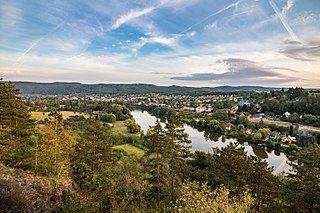
Řevnice is a town in Prague-West District in the Central Bohemian Region of the Czech Republic. It has about 3,800 inhabitants.

Česká Třebová is a town in Ústí nad Orlicí District in the Pardubice Region of the Czech Republic. It has about 15,000 inhabitants. The historic town centre is well preserved and is protected by law as an urban monument zone.

Rakovník is a town in the Central Bohemian Region of the Czech Republic. It has about 16,000 inhabitants. The historic town centre is well preserved and is protected by law as an urban monument zone.

Písek is a town in the South Bohemian Region of the Czech Republic. It has about 31,000 inhabitants. The town is known for the oldest bridge in the country. The historic town centre is well preserved and is protected by law as an urban monument zone.
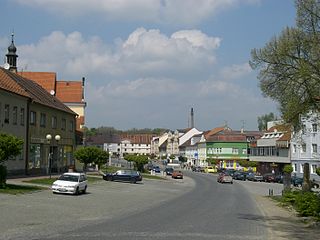
Protivín is a town in Písek District in the South Bohemian Region of the Czech Republic. It has about 4,800 inhabitants.

Uničov is a town in Olomouc District in the Olomouc Region of the Czech Republic. It has about 11,000 inhabitants. The historic town centre is well preserved and is protected by law as an urban monument zone.
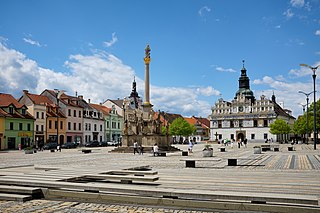
Stříbro is a town in Tachov District in the Plzeň Region of the Czech Republic. It has about 8,100 inhabitants. The historic town centre with the Renaissance Stříbro bridge is well preserved and is protected by law as an urban monument zone.

Městec Králové is a town in Nymburk District in the Central Bohemian Region of the Czech Republic. It has about 2,900 inhabitants.
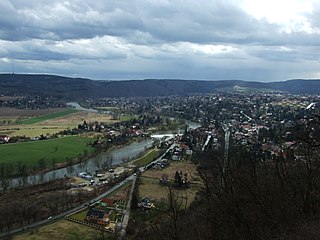
Černošice is a town in Prague-West District in the Central Bohemian Region of the Czech Republic. It has about 7,700 inhabitants.

Přeštice is a town in Plzeň-South District in the Plzeň Region of the Czech Republic. It has about 6,800 inhabitants.

Beroun District is a district in the Central Bohemian Region of the Czech Republic. Its capital is the town of Beroun.
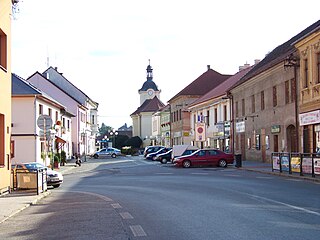
Zdice is a town in Beroun District in the Central Bohemian Region of the Czech Republic. It has about 4,100 inhabitants.

Králův Dvůr is a town in Beroun District in the Central Bohemian Region of the Czech Republic. It has about 11,000 inhabitants. Králův Dvůr creates a conurbation with Beroun.

Pečky is a town in Kolín District in the Central Bohemian Region of the Czech Republic. It has about 4,900 inhabitants.

Loděnice is a municipality and village in Beroun District in the Central Bohemian Region of the Czech Republic. It has about 2,100 inhabitants.

Tetín is a municipality and village in Beroun District in the Central Bohemian Region of the Czech Republic. It has about 900 inhabitants.

Cerhovice is a market town in Beroun District in the Central Bohemian Region of the Czech Republic. It has about 1,200 inhabitants.

The Litavka is a river in the Czech Republic, a right tributary of the Berounka River. It flows through the Central Bohemian Region. It is 54.9 km (34.1 mi) long.
The 2016–17 Czech Cup, known as the MOL Cup for sponsorship reasons, was the 24th season of the annual knockout football tournament of the Czech Republic. It began with the preliminary round on 22 July 2016 and ended with the final in May 2017. The winner of the cup gained the right to play in the group stage of the 2017–18 UEFA Europa League.

























